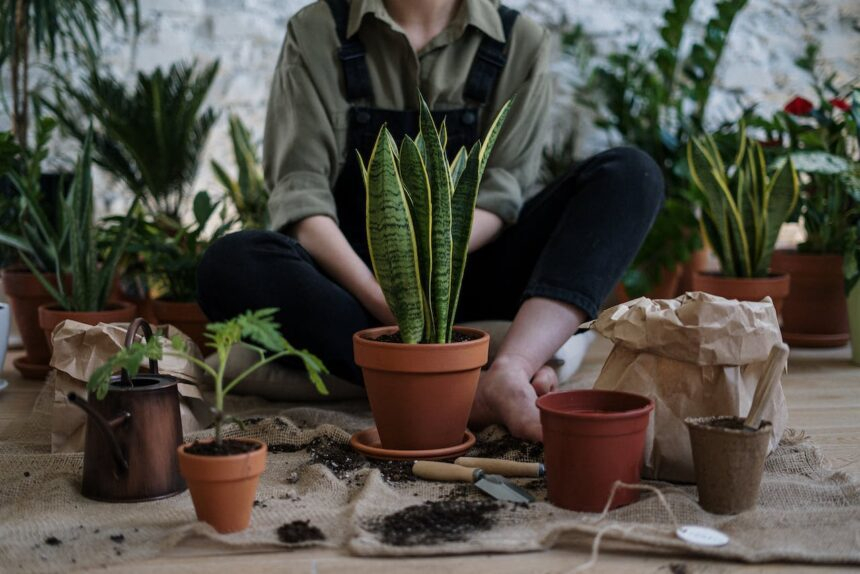Starting a garden from scratch can seem daunting, but with some planning and preparation, anyone can do it! As a beginner, it’s important to start small and simple. Follow this step-by-step guide to learn the basics of starting a vegetable or flower garden from scratch.
Choose a spot to start a garden from scratch
When starting a garden, the first step is choosing an appropriate spot. Consider these factors:
Sunlight
Most plants need at least 6 hours of direct sunlight per day. Study the light conditions in your yard and select a sunny spot.
Soil quality
Good soil is the foundation of a healthy garden. Avoid low areas that collect standing water. Test the soil to determine if nutrients or amendments are needed.
Accessibility
Pick an area close to a water source and easy to access frequently. This makes garden maintenance much simpler.
Ensure proper sunlight to start a garden from scratch
Once you’ve selected a site, it’s time to plan what to plant!
What do you want to grow?
Decide on 3-5 vegetable or flower varieties suitable to your climate to start. Focus on beginner-friendly options.
Design the layout
Consider the sunlight needs, size, and height of each plant when mapping out the arrangement. Place tall plants towards the back.
Prepare for succession planting
To harvest produce for longer periods, make a schedule for when to sow seeds or plant seedlings. This ensures a steady yield.
Evaluate soil quality to start a garden from scratch
Preparing the soil properly makes all the difference!
Remove grass and weeds
Eliminate competing grass and weeds by sheet mulching or solarizing the area.
Mix in compost
Work 1-3 inches of compost into the top 6-12 inches of soil to enrich nutrition and drainage.
Create garden beds (optional)
For ease of planting and maintenance, construct raised garden beds and pathways.
Time to plant!
Once your garden is laid out and soil enriched, it’s finally time to get planting!
Start seeds indoors
Begin tender vegetable seeds indoors 6-8 weeks before your last frost date. Harden off and transplant later.
Direct sow hardy seeds
Sow hardy vegetable and flower seeds like peas, radishes, and zinnias directly in prepared garden beds.
Space properly
Refer to seed packets for proper planting depths, and spacing between plants and rows.
Use grids and signs
Use grids, row labels, and plant signs to keep track of what was planted and where.
Maintain the garden
Consistent garden care is key! Be diligent about these tasks:
Watering appropriately
Provide new plants with 1-2 inches of water per week. Established plants need less frequent, deeper watering.
Weeding frequently
Pluck weeds when young and shallow-rooted to prevent them from spreading seeds and robbing nutrients.
Monitoring for pests
Inspect regularly and remove pests by hand or use organic sprays if infestations get severe.
Fertilizing when needed
Replenish nutrients mid-season by mixing a thin layer of compost into topsoil or applying organic vegetable fertilizer.
Mulching
Apply 2-3 inches of organic mulch around plants to regulate soil temperature and moisture while suppressing weeds.
With the right preparation and care, your garden will thrive! Be patient, enjoy the process, and have fun! Check out this article to learn more about choosing the perfect soil, fertilizer, and mulch.
Frequently Asked Questions to start a garden from scratch
-
How to make a simple garden?
Start with a small 4×4 or 4×8 raised bed. Focus on a few hardy, beginner-friendly vegetables like greens, radishes, peas, or tomatoes. Use drip irrigation and mulch to reduce maintenance.
-
What is an easy garden idea?
A container vegetable garden is very simple – just fill pots with a quality potting mix and plant one veggie like a tomato or pepper per container. A culinary herb garden is beginner-friendly and requires little care when grown in containers.
-
How do I make a nice small garden?
Maximize space and add charm by adding vertical interest with trellises and vining plants. Include bright flowers among the vegetables. Add garden art, seating, and lighting effects for additional appeal.
-
How to create a garden?
Select the sunniest part of your yard, and remove any grass or weeds. Mix compost into the top 6 inches and create raised beds with framing lumber. Top beds with quality soil and start planting!
-
What is the easiest type of garden?
A perennial flower garden focused on hardy varieties like coneflowers, salvia, sedum, and ornamental grasses is easy for beginners since annual replanting isn’t required. Just be sure to prepare the planting area properly.
-
What makes a garden beautiful?
Creative use of shape, texture, and color through thoughtfully selected plants. Interesting hardscaping with materials like gravel, stone, and brick. The addition of decor, seating, lighting, and water features also enhances beauty.
-
How do I shape my garden?
Use informal, flowing curves or symmetrical geometric shapes when designing garden beds. Repeat shapes in hardscape features like paths, borders, and trellises for harmony.
-
How do I style my garden?
Craft a garden style you love – formal, cottage, contemporary, etc. Carry the style through with consistent plant palettes, materials, decor, and layout. Add personal touches that reflect your tastes.
-
What is a small garden size?

A small garden can range from a single raised bed of 4×4 feet up to roughly 200-300 square feet of total planting space – enough room for 6-8 modestly sized garden beds plus narrow access paths.









